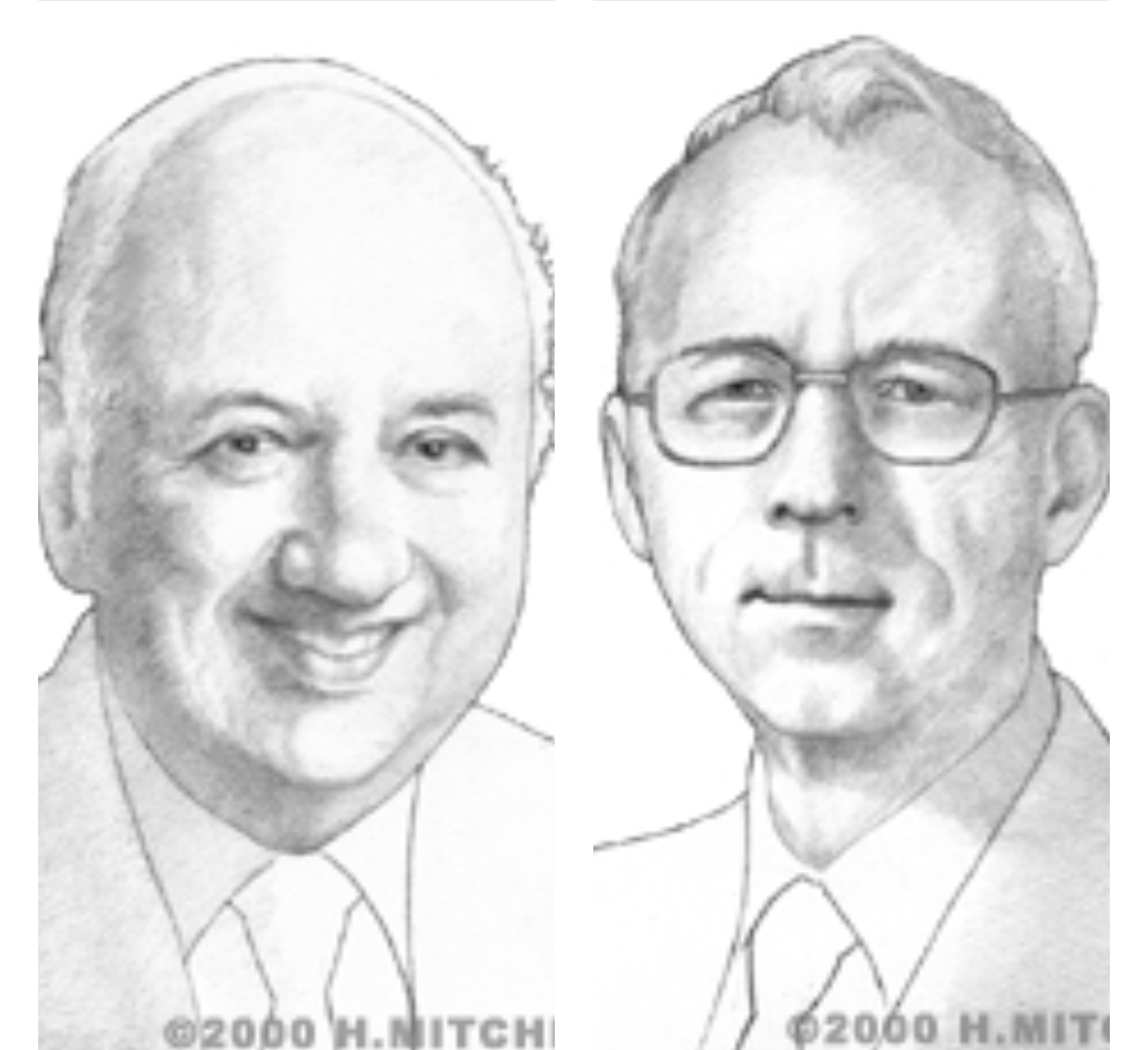Robert Everett and Jay Forrester
Robert Everett and Jay Forrester were pioneers in the development of early digital computer equipment during the years many consider to be the most productive decade for computing technology: 1946-1956.
A native of Nebraska, Forrester received a BS degree in electrical engineering from the University of Nebraska in 1939. Everett received his BS degree in electrical engineering from Duke University in 1942. The two met as graduate students in electrical engineering at the Massachusetts Institute of Technology (MIT).
In 1944, the U.S. Navy contracted Forrester and Everett to develop a universal flight trainer and aircraft simulator. The then-students knew that the analog calculating machines that were available couldn’t do the job. Calculations on those machines took days, and this project called for something that would react instantly, solving many equations at once. Plus, a machine like that could have many different uses.
The result of Everett, Forrester, and their team’s work was Whirlwind, the first real-time electronic digital computer. This fast, reliable, versatile system replaced expensive, unreliable electrostatic tubes with dependable random access magnetic core memory – a technology that would dominate computers for about 20 years.
The technology involved the phenomenon that when current flows through a core, the core becomes magnetized even when the current is removed. The introduction of this kind of memory makes computers smaller in size, faster to access data, and more powerful. Whirlwind became the direct forerunner of the computers that today control air traffic and weapons systems, operate real-time reservations and banking systems, and keep track of records.
The project also yielded several technologies that are still in use today, including RAM, which became available in 1953. A concept for core memory had been patented by An Wang at Harvard University in 1949, but his technique involved using the cores on single wires to form delay lines. The Whirlwind Project conceived the technique of stringing the cores onto a matrix of wires and thus producing a random access memory.
By 1949, the Navy was losing interest in Whirlwind, but that summer, the Soviet Union detonated its first atomic bomb. People realized that computers would be essential in the defense of the country, and interest in Whirlwind was renewed. Forrester implemented the development of the Semi-Automatic Ground Environment (SAGE) system from Whirlwind-based prototypes. In 1953, Forrester's magnetic core memory was added to the system.
Forrester left the project in 1956 to focus on a new field – system dynamics – where he introduced the world to the concept of using computer simulations to analyze social systems. Meanwhile, SAGE began operating in 1958 and was used as an air defense system until the 1980s.
Forrester received his MS degree from MIT in 1945. He stayed on to become director of MIT's Digital Computer Laboratory until he changed his focus to system dynamics and began teaching at MIT’s Sloan School of Management. Today Forrester is Germeshausen Professor Emeritus and Senior Lecturer at Sloan and a member of the National Inventors Hall of Fame.
In 1943, Everett became a member of the staff of MIT Servomechanisms Laboratory, engaging primarily in the development of hydraulic servomechanisms for stabilized shipboard radar antennas. In 1956, he became head of Division VI of Lincoln Laboratory, where he was in charge of the SAGE air defense system design and test and directed Lincoln’s data processing research and development. From 1969 to 1986, Mr. Everett served as president of The MITRE Corp.
Everett was previously a senior scientist of the Air Force Scientific Advisory Board and a member of the Ballistic Missile Defense Advisory Committee. His work has been published in numerous technical journals, and he has been awarded several patents in the fields of magnetic drum memories and display devices. Today, Everett is a Fellow of the IEEE and a member of the National Academy of Engineering, the Association for Computing Machinery, and the American Association for the Advancement of Science.
For their work in real-time computer technologies, Forrester and Everett were awarded the National Medal of Technology by President Bush in 1989.


